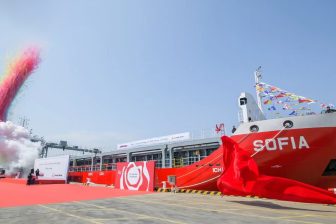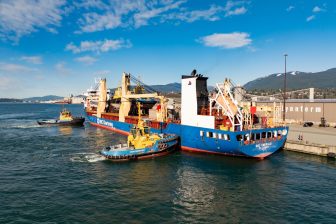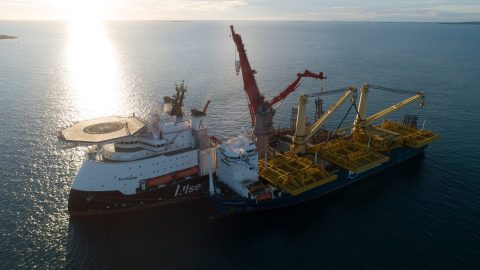
Jumbo-SAL-Alliance wraps up project cargo transport for Gorgon Stage 2
Jumbo-SAL-Alliance has recently supported Chevron’s Gorgon Stage 2 development by delivering project cargo onboard four of its heavy lift vessels on two separate occasions.
First, the alliance deployed Jumbo Jubilee and Jumbo Vision to support installation work on a natural gas field located offshore Western Australia.
The two vessels transported a total of 29 offshore reels up to 11.4-metres in diameter in two shipments from Newcastle (UK) and Le Trait (France) to the sheltered anchorage of West Lewis, Western Australia. From this location, their role was to remain on standby, transferring reels to the client’s offshore installation vessel when required.
As the project progressed, the project teams from both sides saw an opportunity to optimise operations by transferring the Jumbo Vision’s remaining cargo to the Jumbo Jubilee. In effect, the open communication and collaborative relationship between Jumbo-SAL-Alliance and the client released the Jumbo Vision from the project at an early stage, thereby significantly reducing the client’s vessel chartering costs.
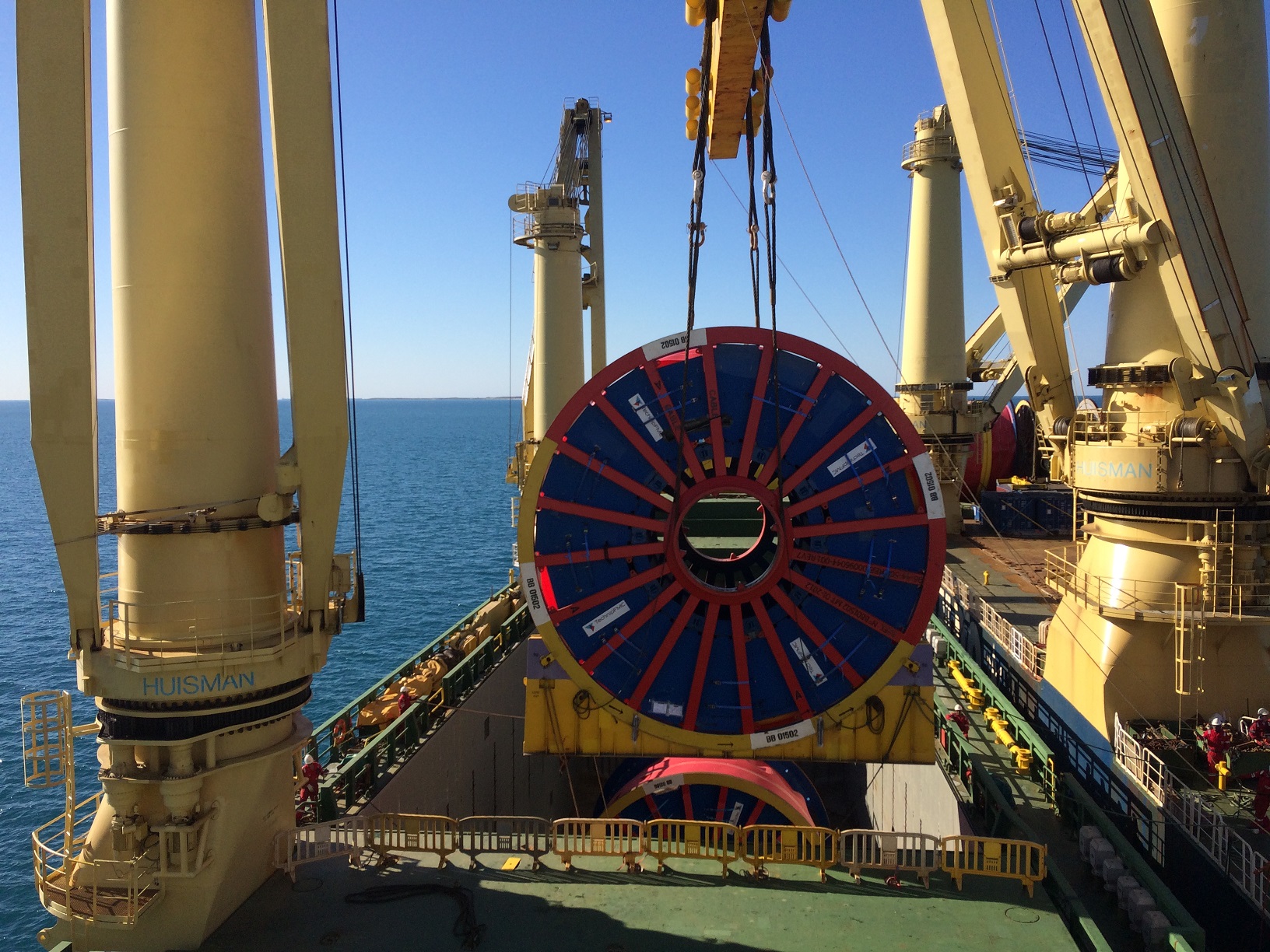
The Jumbo Jubilee continued to be on standby for the duration of the project. This not only provided the client with the controlled low-risk storage of its offshore components, the Jubilee’s twin 900-tonne capacity cranes offered valuable flexibility for the client’s installation sequence.
The alliance further deployed its heavy lift vessels, Fairpartner and Fairlane, to deliver project cargo to the project, effectively concluding the extensive subsea equipment transport contract.
The Fairpartner kicked off the project, using its 800-tonne lifting capacity to pick up its share of the project cargo – consisting of three subsea modules and foundations, and associated scour protection materials – from Malaysia and Indonesia to Australia. The Fairlane’s task was to transport two 11.40-diameter offshore reels from Norway to Australia. Upon arrival in Australia, all the cargo was transferred to the client’s installation vessel.
The Fairpartner’s load was not straightforward because all three foundations had a footprint of 30.34 x 25.36 metres, meaning that they protruded over the edge of the Fairpartner’s deck by almost seven metres. They were so wide that they could only be secured to the starboard side of the vessel. It was Jumbo’s close communication with its client that yielded a seafastening solution that was not only safe, but also met the client’s requirement of having no steel-to-steel contact.
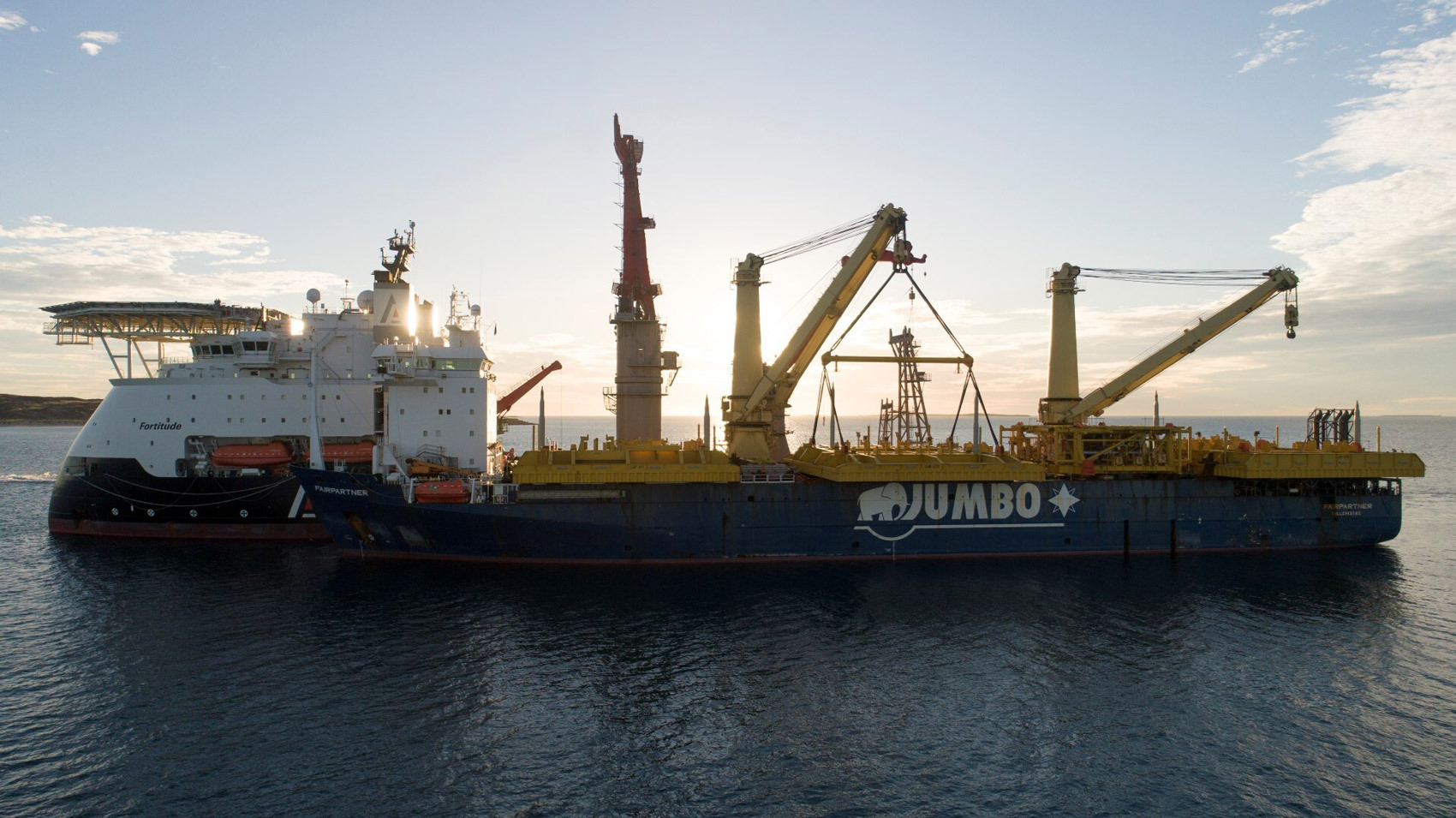
Furthermore, Jumbo loaded the subsea modules and foundations in such a way that they could be offloaded in any order. This gave the client flexibility of discharging sequence; they could choose which equipment to install depending on the weather conditions at their offshore installation sites.
Talking at the end of the project, Jumbo’s Director Business Development (Southeast Asia & Oceania) Jeroen Kock said, “This project was not without its difficulties; we had multiple stakeholders, engineering challenges, and of course, the continued presence of the coronavirus. However, we worked side-by-side with our client to complete the scope for an on-time delivery, undamaged cargo, and without any injuries. Our thanks go to our client’s project team – it was their support that facilitated the successful conclusion of this project.”
Gorgon is one of the world’s largest LNG projects and the largest single resource project in Australia’s history. Located on Barrow Island – a Class A Nature Reserve – Gorgon comprises a three-train, 15.6 million tonnes per annum LNG facility and a domestic gas plant with the capacity to supply 300 terajoules of gas per day to Western Australia.
Through the Gorgon Stage 2 and Jansz-Io Compression projects, additional wells and subsea infrastructure will be added to the Gorgon and Jansz-Io gas fields to maintain future gas supply to the three existing LNG trains and domestic gas plant. This was always envisaged as part of the original Gorgon development plans.
The Gorgon Project is operated by Chevron Australia and is a joint venture of the Australian subsidiaries of Chevron (47.3 percent), ExxonMobil (25 percent), Shell (25 percent), Osaka Gas (1.25 percent), Tokyo Gas (1 percent) and JERA (0.417 percent).
You just read one of our premium articles free of charge
Register now to keep reading premium articles.



